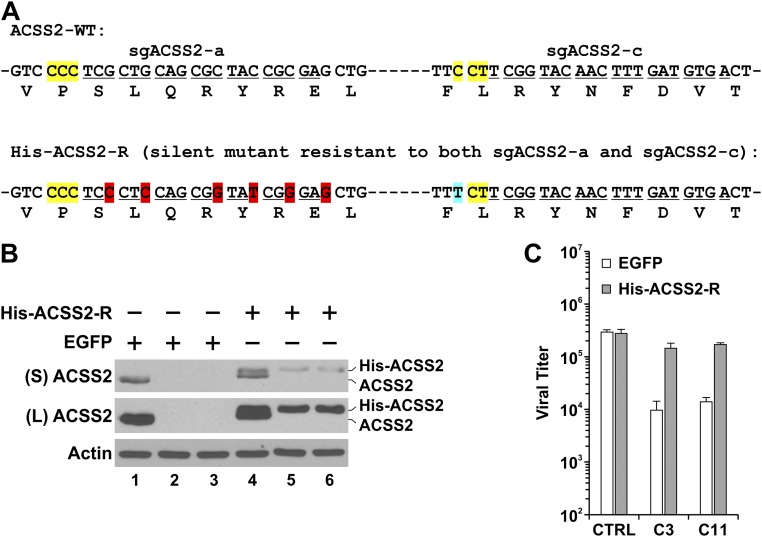Fig. S4.
Reintroduction of sgACSS2-resistant His-ACSS2 rescued viral growth in C3 and C11 HFs. (A) His-tagged wild-type human ACSS2 cDNA was silently mutated to create His-ACSS2-R cDNA resistant to both sgACSS2-a and sgACSS2-c. Targeting sequences of sgACSS2-a and sgACSS2-c are underlined; PAMs are highlighted in yellow; the silently mutated sgACSS2-a site is highlighted in red, and the silently mutated PAM of sgACSS2-c is highlighted in blue. (B) Expression of His-ACSS2 in control, C3, and C11 HFs was evaluated by Western blot analysis. Lentivirus expressing His-ACSS2 from cDNA of His-ACSS2-R was made to infect control, C3, and C11 cells. Whole-cell extracts were made at 48 h post lentiviral infection and were analyzed by Western blot using ACSS2 antibody. Lanes 1 and 4: control HFs. Lanes 2 and 5: C3 HFs. Lanes 3 and 6: C11 HFs. ACSS2, endogenous ACSS2 protein; His-ACSS2, reintroduced exogenous ACSS2 protein; L, long exposure; S, short exposure. (C) HCMV growth was rescued by the reintroduction of ACSS2-resistant guide RNA. Two days after reintroduction of His-ACSS2-R, cells were serum-starved overnight and were infected with HCMV at an MOI of 3. Viruses were harvested at 96 hpi and titrated.

